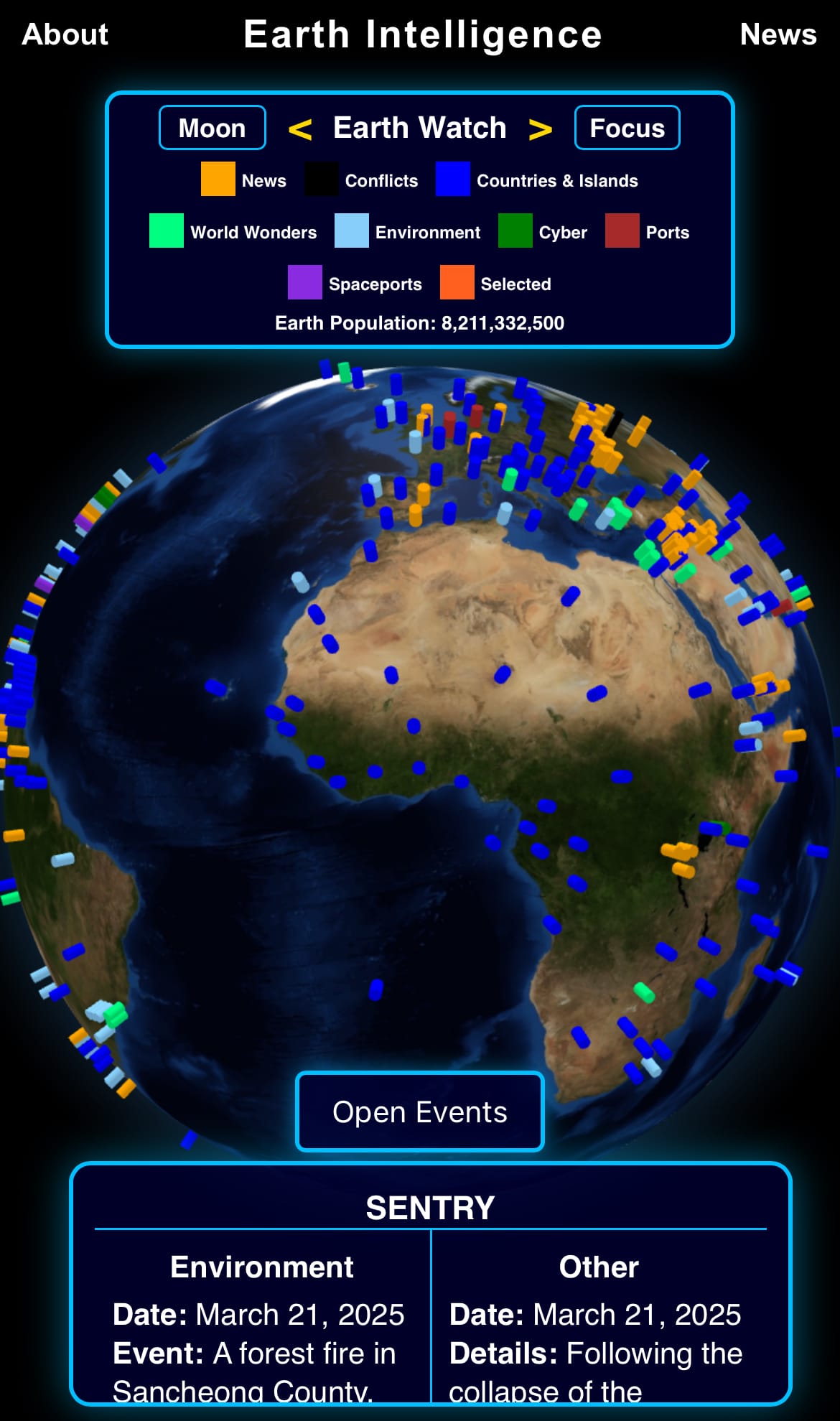Monday☕️

Economics & Markets:
- Today’s commodity market:

- Today’s crypto market:

Geopolitics & Military Activity:
- As of April 2025, the Red Sea region continues to experience heightened tensions due to ongoing attacks by Yemen’s Houthi rebels, who have targeted both commercial shipping and military assets with missiles and drones. These actions, which escalated following regional conflicts in late 2023, have disrupted maritime traffic along a key global trade route. In response, the United States has increased its military presence, conducting daily airstrikes on Houthi infrastructure—such as radar installations, missile launch sites, and command posts. To bolster these efforts, the U.S. has deployed two carrier strike groups, USS Harry S. Truman and USS Carl Vinson, alongside F-35 fighters and B-2 bombers positioned at Diego Garcia. The Houthis, in turn, have vowed to continue their operations, citing opposition to U.S. and Israeli activities, which has fueled debates about the potential for wider escalation involving Iran, a known supporter of the group.
- Military cargo planes have been heavily utilized to support this expanded U.S. presence, with flight tracking data as of April 7, 2025, indicating a notable increase in supply missions. Aircraft like the C-17 Globemaster III and C-130 Hercules have been observed moving personnel, equipment, and supplies to bases such as Al Udeid in Qatar and Diego Garcia, according to platforms like FlightRadar24. This logistical surge aligns with the prolonged deployment of the Truman strike group and the recent arrival of the Vinson group, ensuring operational continuity for air and naval forces in the region. The increased cargo flights reflect a broader effort to maintain a sustained military posture.
Environment & Weather:
- Yesterday, April 6, 2025, a large forest fire broke out near the Mae Taeng Elephant Camp in Thailand’s Chiang Mai province, spreading quickly through the surrounding forested area. The Mae Taeng district, home to several elephant camps, features dense vegetation that becomes prone to wildfires during the dry season due to seasonal weather patterns, including high temperatures and low moisture levels. The fire’s location near the camp has prompted a coordinated response to protect the area, though the full extent of its impact remains under assessment as of April 7, 2025.

- The Baan Chang Trakun Saen Elephant Rescue Team, known as the "Big Rescue Team," has joined efforts to address the fire, working alongside forest firefighting officers. This team, which includes elephant handlers and volunteer firefighters, is assisting in containment operations, with elephants reportedly aiding in tasks such as clearing vegetation to create firebreaks. Such methods have been documented in prior regional efforts to manage wildfires. ities.

Science & Technology:
- Scientists at the Feinstein Institutes for Medical Research have developed a brain-computer interface (BCI) that incorporates touch feedback, tested in a patient paralyzed from the chest down following a driving accident. The implanted technology enabled the patient to control hand movements and experience tactile sensations, using these to perform tasks like picking up a cup to drink and gently grasping an empty eggshell without breaking it, all directed by thought. This system uses intracortical microstimulation to activate the somatosensory cortex, aiming to replicate the natural interplay between movement and sensation. The result is a more seamless interaction with objects, potentially improving quality of life for individuals with paralysis by enhancing the precision and utility of motor functions.
- When compared to other BCIs like Neuralink, Synchron, and Blackrock Neurotech, the Feinstein technology shares similarities but also highlights distinct differences in approach and focus. Neuralink’s fully implantable, wireless system, demonstrated in 2024, allows thought-driven cursor control, emphasizing high data throughput, though it has not publicly detailed sensory feedback capabilities. Synchron’s Stentrode, delivered through blood vessels, supports tasks like texting with a less invasive method, but its signal resolution is lower, and touch feedback has not been a reported feature.
- Blackrock Neurotech’s Utah array, in use since 2004, excels in motor control for research and clinical applications, yet sensory integration remains less prominent. The Feinstein system’s incorporation of touch feedback reflects broader efforts in the field to develop bidirectional BCIs. Various technologies—ranging from invasive systems like those from Feinstein, Neuralink, and Blackrock to semi-invasive approaches like Synchron—are exploring this goal, each facing ongoing challenges related to scalability, long-term stability, and accessibility. The ultimate objective of these initiatives is to enable seamless communication between the brain and external devices, restoring or augmenting lost sensory and motor functions for individuals with neurological conditions.
Statistic:
- Largest assets on Earth by market capitalization:
- GOLD: $20.619T
- 🇺🇸 Apple: $2.829T
- 🇺🇸 Microsoft: $2.675T
- 🇺🇸 NVIDIA: $2.301T
- 🇺🇸 Amazon: $1.812T
- 🇺🇸 Alphabet (Google): $1.786T
- SILVER: $1.721T
- 🇸🇦 Saudi Aramco: $1.696T
- BTC: $1.566T
- 🇺🇸 Meta Platforms: $1.278T
- 🇺🇸 Berkshire Hathaway: $1.065T
- 🇺🇸 Tesla: $770.13B
- 🇹🇼 TSMC: $761.38B
- 🇺🇸 Broadcom: $687.84B
- 🇺🇸 Walmart: $666.92B
- 🇺🇸 Eli Lilly: $662.90B
- 🇺🇸 Visa: $604.03B
- 🇺🇸 JPMorgan Chase: $587.96B
- 🇨🇳 Tencent: $583.08B
- 🇺🇸 UnitedHealth: $480.26B
- 🇺🇸 SPDR S&P 500 ETF Trust (SPY): $463.73B
- 🇺🇸 Exxon Mobil: $452.74B
- 🇺🇸 Mastercard: $446.52B
- 🇺🇸 Costco: $406.62B
- 🇺🇸 Procter & Gamble: $383.96B
History:
- The concept of brain-computer interfaces (BCIs) traces back to the mid-20th century, emerging from early neuroscience and cybernetics research. In the 1920s, Hans Berger’s development of electroencephalography (EEG) laid the groundwork by demonstrating that brain activity could be recorded noninvasively via electrical signals. The idea of directly interfacing with the brain gained traction in the 1960s when scientists like José Delgado experimented with brain stimulation in animals using implanted electrodes, hinting at the potential for bidirectional communication. The first true BCI milestone came in the 1970s when Jacques Vidal at UCLA proposed using EEG to control external devices, introducing the term "brain-computer interface" and testing rudimentary systems that translated brain signals into computer commands. These early efforts were limited by technology, relying on basic signal processing and noninvasive methods, but they sparked interest in merging human cognition with machines.
- Advancements accelerated in the 1990s and 2000s as computing power and electrode technology improved, shifting BCIs from theoretical concepts to practical applications. Invasive systems, like the Utah array developed by Richard Normann in the 1990s, enabled precise neural recording and motor control, exemplified by Blackrock Neurotech’s work with paralyzed patients starting in 2004. Meanwhile, noninvasive EEG-based BCIs evolved for tasks like spelling or gaming, though with lower resolution. The 2010s saw a surge in ambition and investment, with Neuralink, founded by Elon Musk in 2016, aiming for high-bandwidth, fully implantable systems, achieving cursor control in a human by 2024. Synchron, established around the same time, pioneered a stent-based approach for less invasive implantation, enabling digital tasks by 2021. Today, Blackrock Neurotech, Neuralink, and Synchron stand as major players, alongside research hubs like the Feinstein Institutes, driving BCIs toward broader medical and commercial use, though challenges like signal longevity and ethical concerns persist.
Image of the day:

Thanks for reading!
Earth is complicated, we make it simple.
Click image to view the Earth Intelligence System:



Support/Suggestions Email:
earthintelligence@earthintel.news




